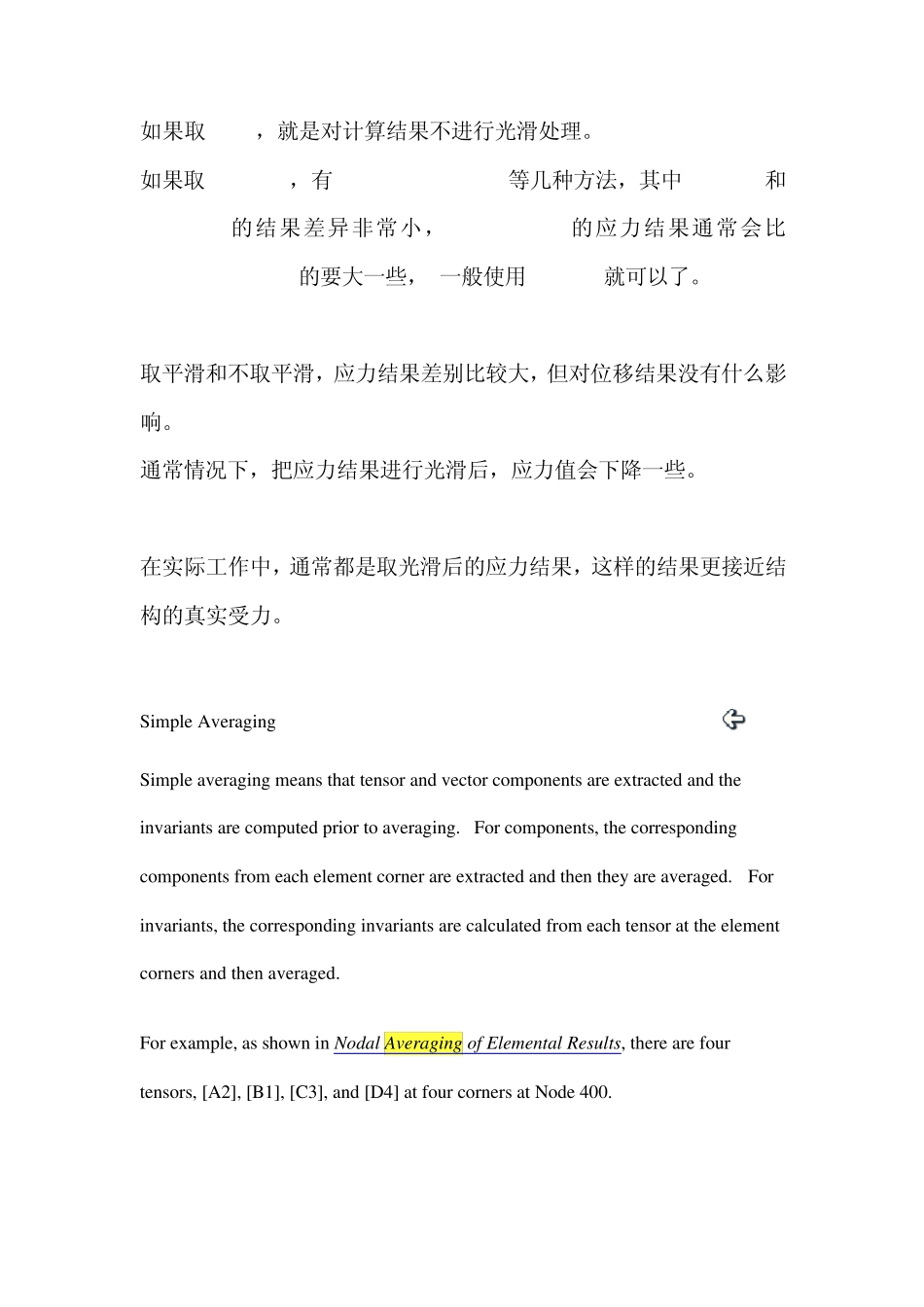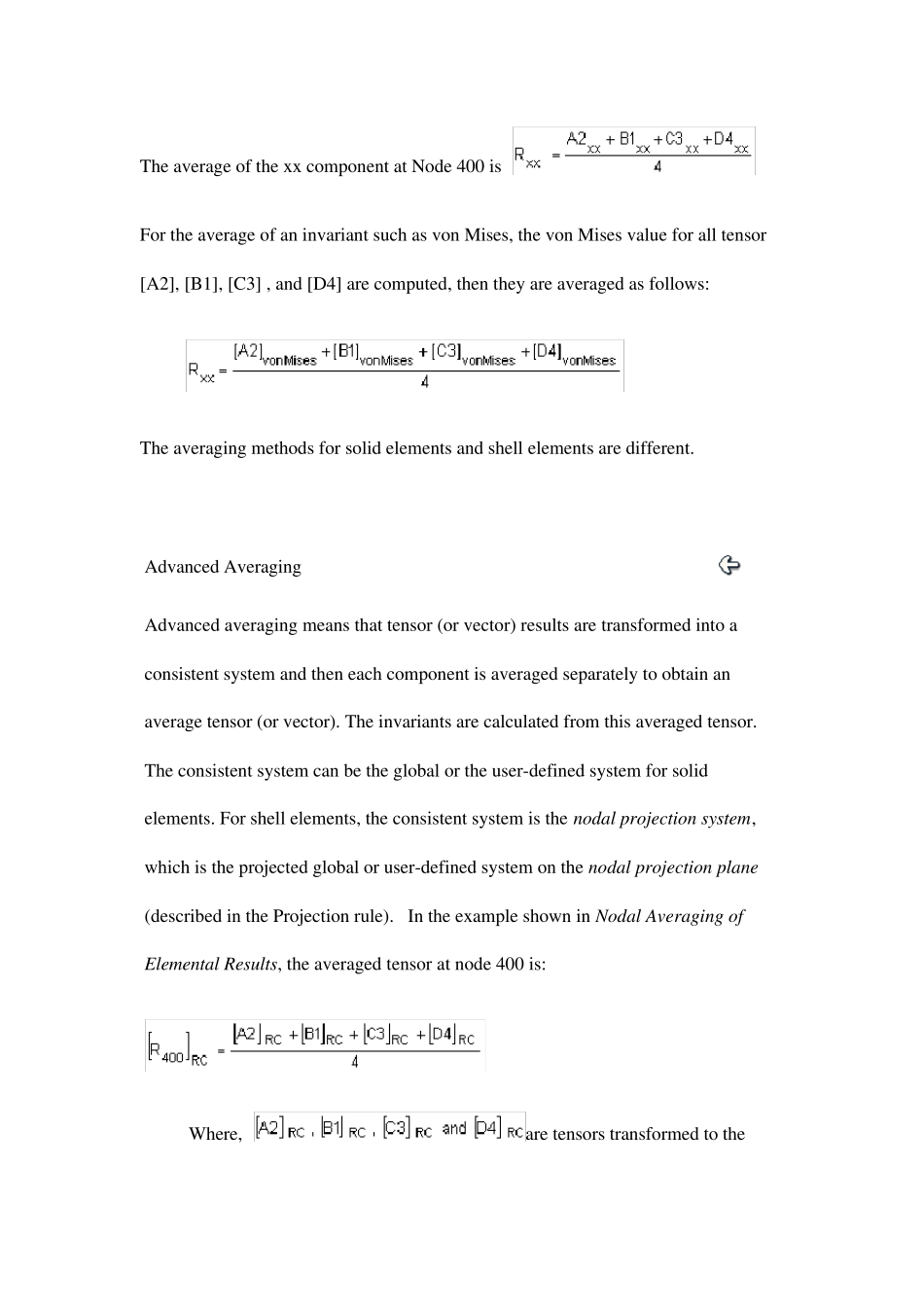Nodal Averaging of Elemental Results Nodal averaging of elemental results at a node refers to the average of all the element corner results passing through that node. If no corner results are available for an element, centroidal results will be used calculate the nodal average. In the example figure below, four elements are passing through Node 400. The average results at Node 400 is equal to: when Use corner data is turned on. when Use corner data is turned off. Nodal averaging options are selected from the Averaging method drop-down menu on the Contour and Iso Value panels. The options are: • Simple • Advanced • Difference 如果取none,就是对计算结果不进行光滑处理。 如果取average,有 simple,advanced等几种方法,其中 simple 和advance的结果差异非常小,difference的应力结果通常会比simple,advance的要大一些, 一般使用 simple就可以了。 取平滑和不取平滑,应力结果差别比较大,但对位移结果没有什么影响。 通常情况下,把应力结果进行光滑后,应力值会下降一些。 在实际工作中,通常都是取光滑后的应力结果,这样的结果更接近结构的真实受力。 Simple Averaging Simple averaging means that tensor and vector components are extracted and the invariants are computed prior to averaging. For components, the corresponding components from each element corner are extracted and then they are averaged. For invariants, the corresponding invariants are calculated from each tensor at the element corners and then averaged. For example, as shown in Nodal Averaging of Elemental Results, there are four tensors, [A2], [B1], [C3], and [D4] at four corners at Node 400. The average of the xx component at Node 400 is For the average of an invariant such as von Mises, the von Mises value for all tensor [A2], [B1], [C3] , and [D4] are computed, then they are averaged as follows: ...


